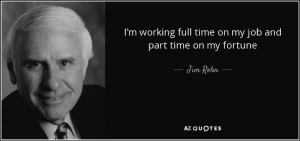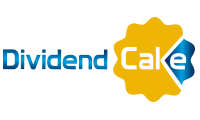Vacation time is finished and tomorrow school starts again for the kids. My mom spend a nice vacation in Tirol (Austria) Blog posts about the past vacations including the honeymoon will soon be published. Now it’s time to focus again on our yearly objectives for each of our portfolios.
So back to the stock and forex market…
As the U.S.-China trade war rages on and a possible recession looms, the White House’s unpredictable rhetoric has been so inconsistent that businesses are unsure of how to proceed. And so it’s no surprise to see the financial markets seesaw along with President Donald Trump’s Twitter feed. 
“How do you invest in this environment? … When a tweet can move a market 200 points intraday, if not even more?” “Do you buy some stock and hold off the next 25 years? What you do?”
It all depends on your investor’s time horizon. Long-term investors have time to weather this short-term volatility. And so instead of monitoring the president’s Twitter feed, investors should focus on the long-term picture for what drives the market.
With far less fanfare than the tax cuts President Donald Trump signed into law in 2017, a series of tax hikes goes into effect on September 1st on thousands of everyday items imported from China.
A new tariff of 15% will be added to the cost of more than 40% of all consumer products imported from China. The Sept. 1 tariffs would take about $16 billion out of Americans’ pockets over the course of a year, if Chinese import levels remain the same. Add in the Dec. 15 tariffs and the cost of the tax would rise to $40 billion. That’s not a huge hit in a $21 trillion economy, but it does add up. JPMorgan Chase estimates the tariffs already in place and scheduled to go into effect will cost the typical American household more than $1,000 per year.
The tariffs hitting today will apply to thousands of products sold at Walmart (WMT), Target (TGT), Best Buy (BBY), Home Depot (HD), Ikea, Amazon (AMZN) and other retailers. Here are some of the main product categories subject to the new tax, according to Panjiva:
Clothing and footwear such as sneakers, sweaters and baby clothes — $39 billion worth of annual imports
Electronics such TVs, monitors, and audio equipment — $24 billion
Machinery such as printers, desktop computers, hand tools, and air-conditioner parts — $15 billion
Plastic products such as tableware, buckets, and school supplies — $5 billion
Leisure products such as NordicTrack fitness machines — $5 billion
Furniture such as bedding — $1 billion
Price hikes won’t hit consumers right away on every product. Some importers have been stockpiling Chinese imports ahead of the new tariffs, so they’ll be able to sell from non-tariffed inventories for a while. But retailers have been griping about the tariffs nonetheless. A group of more than 200 shoe companies, for instance, recently sent a letter to Trump calling the tariffs a “hidden tax … driving up costs for hardworking American families.”
Most economists say the Trump tariffs alone aren’t enough to cause a recession. But they’re probably slowing overall economic growth. And the latest consumer-sentiment survey by the University of Michigan showed a big drop, largely due to the escalating trade war. But as long as the Chinese and US consumers keep on spending money, I wouldn’t worry about a looming recession too much (yet).
The dollar has gone up 5 % this year and gold has gone up 18%. Focus on what this means for your portfolio and whether you are invested in the strongest (recession proof) sectors.
Now let’s see what our July & August 2019 cashflow was for my mom’s portfolio.
Passive Income in July & August 2019
During the month of July & August 2019, we received in total 357,37$ passive income. Only dividend income as we didn’t execute any options trades. We received now 1761$ for the year 2019
Here you find the overview of all passive income payouts during the year 2016, 2017,2018 and 2019.
We have now 50% of our yearly objective.
![]()
The Options Trade Review
No Options trades in July & August.
Going forward
We have 4 months to go to meet our yearly objective. A quick math calculation learned me that I need to achieve an average options premium income of 300$ per month. Is it possible ? Let’s find out in the coming months…
In 2019 we will send out ONE newsletter per month to our blog followers. Life can be busy sometimes and people lose track of following a personal finance and travel blog. Subscribe and you will get one email per month highlighting what you missed…
Thanks for following us on Twitter and Facebook and reading this blog post. We end with a quote as always.
Source : Yahoo Finance


No Comment
You can post first response comment.